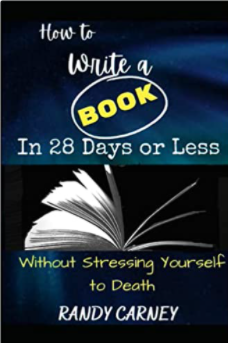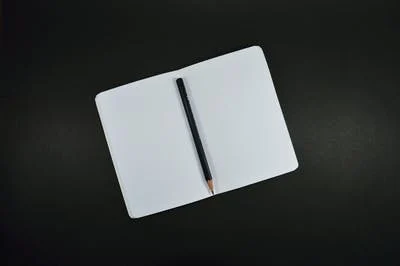I’m talking about writing again today. Stress-free creative writing.
I’m going to give you some steps to be able to do some stress-free creative writing. Basically, I’m going to talk about three different areas.
Brainstorm

The first one is to brainstorm. You’re just going to come up with a list of ideas that you want to write about. As you’re making that list of ideas, just write wildly; nothing is too outrageous, because you will be able to choose what is on your list. Once you’ve done that, then choose some ideas from your list that you want to write about.
Statements, Questions, and Headlines
The second area I want to talk about is how to work with those ideas.
So first of all, take your ideas and turn them into statements, questions, or headlines.

Questions
Once you have those written down, to the right of your statement, question, or headline, write down a question word: Who, what, when, where, why, how, or what then. Now if you had already written a question then you don’t want to put another question after it.
Key Words or Phrases
Write down some key words or phrases that describe the answer to that question. They can be nouns or verbs, or strong words like that. They can be sensory words like what you see or elicit what you think the smell would be like or what you would hear but some strong keywords.
So once you have done that, you have a page that has sort of an outline. You have a list of questions, statements, or headlines followed by a question word unless your original statement or idea is a question. Then you have three suggested answers to that question.
Once you have your ideas set up in that fashion, then you are ready to go for stress-free creative writing.
Fast Writing
What makes it stress-free is you’ve already come up with the basis of your ideas So now the next part and the magic of doing that is to do fast writing.

Read your first question or statement with a question following it. Pick one of those key words or key phrases and start writing just as fast as you can. I find it good to set a timer and write just as fast and furiously as I can until that timer goes off. A good time to set your timer is five minutes. Write as quickly as you can for five minutes.
If that doesn’t give you about 250 words, depending on how fast you can type, then you may want to set it for six minutes or somewhere all the way up to 10 minutes. Just write as fast as you can.
There it is: stress-free creative writing.
✔Brainstorm without agonizing over what you’re writing down in your brainstorming.
✔Make it better by picking just the words and ideas that you want to write about.
✔Put a question word after those ideas
✔Write down three things that would trigger your writing or the answer to the questions.
✔Set your timer and write just as fast as you can.
In a future post, I’ll talk about the editing process. So it is stress-free knowing that the editing comes later.

I hope this has been helpful to you. If you would like more tips like these, I have written a book that outlines in more detail how this process works. It’s called “How to Write a Book in 28 Days or Less Without Stressing Yourself to Death” and is available on Amazon. There is both a hard copy and a Kindle version. I would highly recommend that you get that.
Also, if you’d like more writing tips like these, you can go to randycarney.com.
Remember: YOU CAN WRITE A BOOK!




